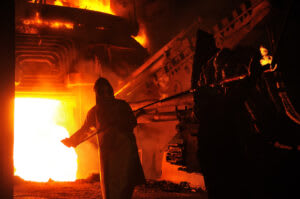 The history of furnaces in the U.S. reflects advances in heating fuel as well as furnace technology. Without functional indoor heating, some regions of the country would be at least very uncomfortable in winter while others would be literally impossible to inhabit.
The history of furnaces in the U.S. reflects advances in heating fuel as well as furnace technology. Without functional indoor heating, some regions of the country would be at least very uncomfortable in winter while others would be literally impossible to inhabit.
Here are some of the key developments in the history of furnaces that have enhanced quality of life and health.
Wood and Coal
Until the 1880s, most homes were heated by fireplaces or wood-burning brick furnaces. None other than Benjamin Franklin helped evolve home heating in 1742 when he designed the Franklin Stove, “For the better warming of rooms.” A free-standing cast iron fireplace, Franklin’s stove featured adjustable baffles to control airflow into the firebox. Cast iron construction radiated warmth more efficiently than brick and the unit generated more heat from less wood than an open fireplace. Franklin stoves became perhaps the first widespread furnace improvement in colonial America.
By 1885, coal was a more common heating fuel than wood. Early central heating systems incorporated a coal-burning boiler that produced steam which was piped to radiators. Meanwhile, David Lennox invented the first central warm air heating system. Utilizing a riveted-steel coal furnace installed in the basement, the system relied on convection as warm air naturally rose through ductwork and spread throughout the house.
Gas and Electricity
By the early 1900s, newly discovered natural gas reserves rapidly made coal furnaces obsolete. Also, the new technology of electrical fans produced forced-air heating that circulated warmth more effectively. Today, approximately 60% of American residences are heated by a forced-air gas-fired central furnace. Others rely on electric heating and in some eastern states fuel oil is still utilized.
Heat From the Air and Earth
Air-source heat pumps represent the latest heating innovations. Heat pumps extract latent heat energy from outdoor air, compress the heat molecules, then utilize a heat exchanger to transfer warmth into the furnace airflow. These systems provide superior heating efficiency in climates where winter temperatures are not too extreme.
For more about the history of furnaces, ask the professionals at Hansberger Refrigeration and Electric Company.
Our goal is to help educate our customers in Yuma, Arizona about energy and home comfort issues (specific to HVAC systems). For more information about other HVAC topics, download our free Home Comfort Guide or call us at 928-723-3183.